6 Types of Products Every Craft Show Table Needs
This article outlines what I include in each product line, why I think it’s important, and how to apply it to a variety of businesses.
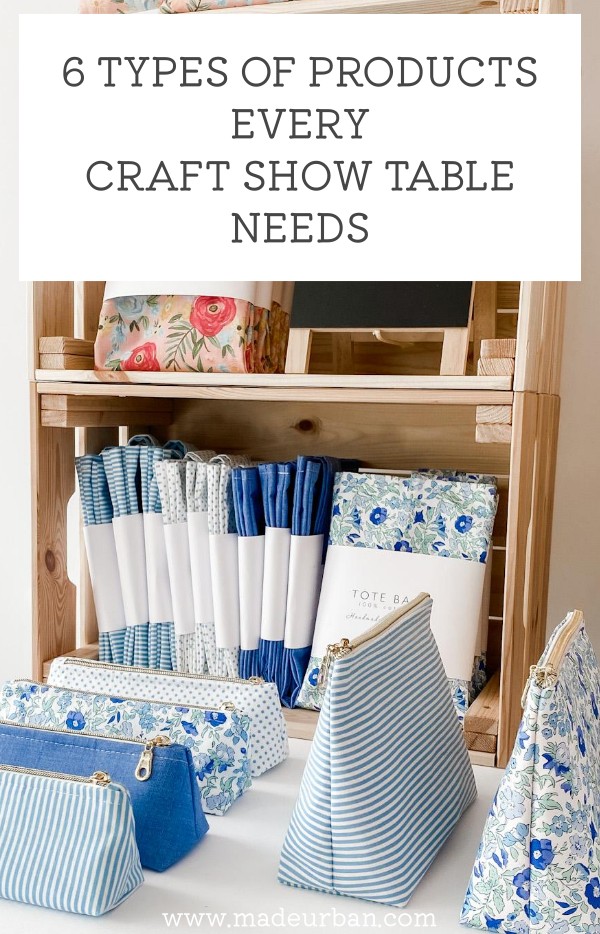
1 – Core Products
A core product is a staple/main item(s)/bestseller for a business. The rest of the products offered work around and are connected to these core products.
Depending on the size of your business and the stage it’s at, you may have one or more core products.
Core products should be mid-priced within your product line; they’re not the most expensive but they’re definitely not the cheapest item you sell.
For example, if I’m creating a line of table/kitchen linens, my core products may be:
- Cloth napkins
- Placemats
- Hot pads
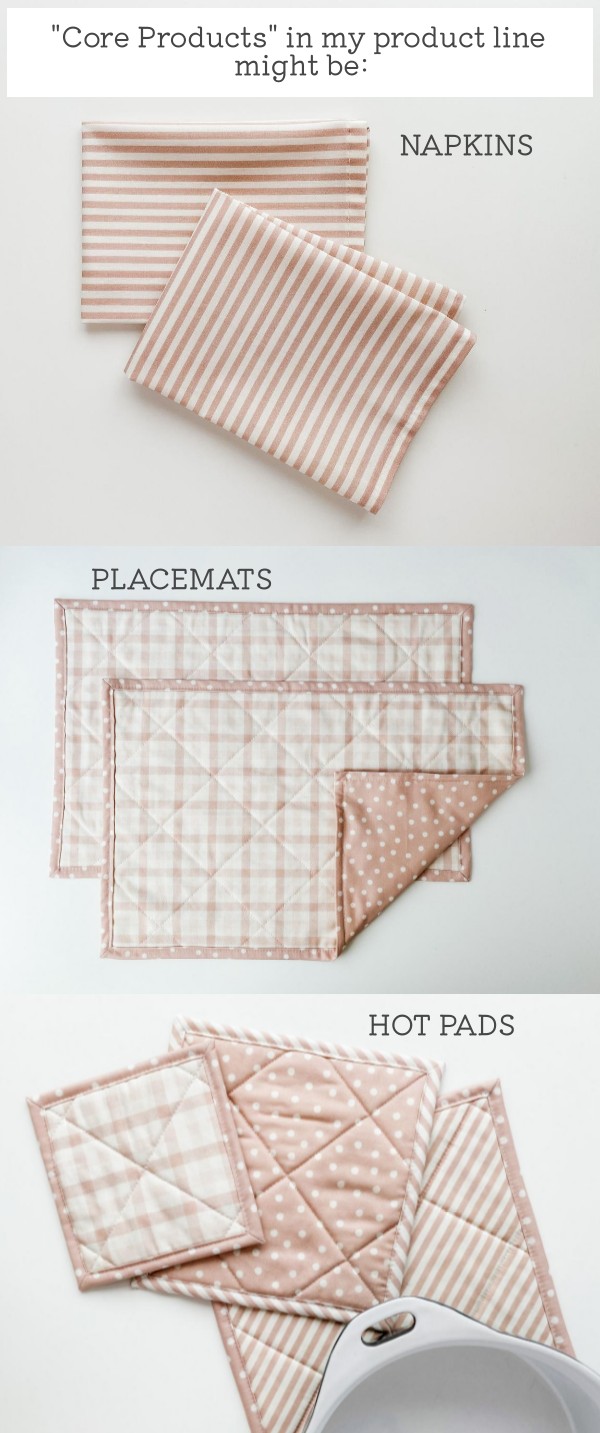
They’ll likely make up the majority of your sales and should get the majority of space on your craft show table. You’ll bring the most stock in these items.
2 – Hero Product
Think of your hero product as the “poster child” for your business. It should represent everything you want your brand and your business to be and be a bestselling product.
It’s similar to a core product, but maybe a little more exciting…it creates a little more buzz.
For example, my hero product that works with the core products in my table linen line might be my casserole cozy. It’s a bit more unique and garners interest because of its multiple functions (it works as a pot holder, hot pad, and helps keep the casserole warm while on the table).
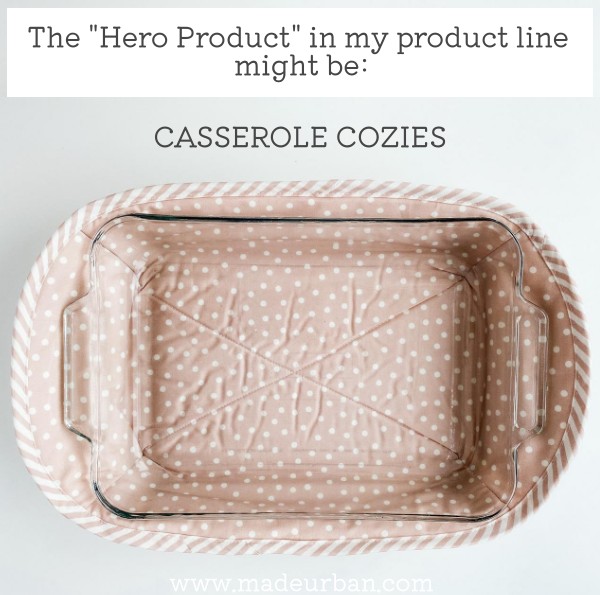
In your craft show display, it should get the spotlight.
It can take some time to uncover your hero product, as you’ll need to develop your brand, gather some sales stats, and see which product(s) grab the most attention when marketing.
>> Here’s more info on a hero product and how to develop one: How To Create a Hero Product for Craft Shows
3 – Upsell Products
These items are a level up from your core products.
It may be that they’re versions of your core products that are better/bigger/more exclusive/etc. Or they may be new products you introduce that are more expensive than your core products.
Upsell products will be higher-priced in your product line. You likely won’t sell as many of these items as you do your core products.
The purpose of upsell products is to offer items for:
- people who have a bigger budget – e.g. they want to buy a gift worth $X
- committed customers – those people who fall in love with your business and trust it, so they have no hesitations about spending more money with you.
- repeat customers – if someone buys a core item, the upsell item might be something they’re eyeing but want to make sure they love their first purchase or wait until their budget allows the upsell product.
For example, the upsell products in my table linen line might be:
- Table runners
- Tablecloths
4 – Add-on Items
These are lower-priced products that customers can add to their order.
They should be “no-brainers” and not require a customer to think too long or hard about whether or not they should buy it. This means your add-on items must make sense with your core products.
Think about:
- When you’re buying new shoes, and they ask if you’d like to add shoe protector or cleaner to your purchase.
- When you get a haircut/color and they ask if you’d like a specific hair product to help maintain your new color or style your new haircut.
- When you’re buying groceries and see chocolate bars at the checkout.
These items cost a fraction of the core/upsell product you’re buying and are related to it.
Take your core and upsell products and think about smaller/lower-priced products that would work well with them; items that people commonly purchase with your core/upsell products or use with them.
For example, my add-on items in my table linen line could be:
- Napkin rings (to be used with the napkins)
- Coasters (to be used with the placemats)
- Casserole Covers (to be used after the casserole cozy is used)
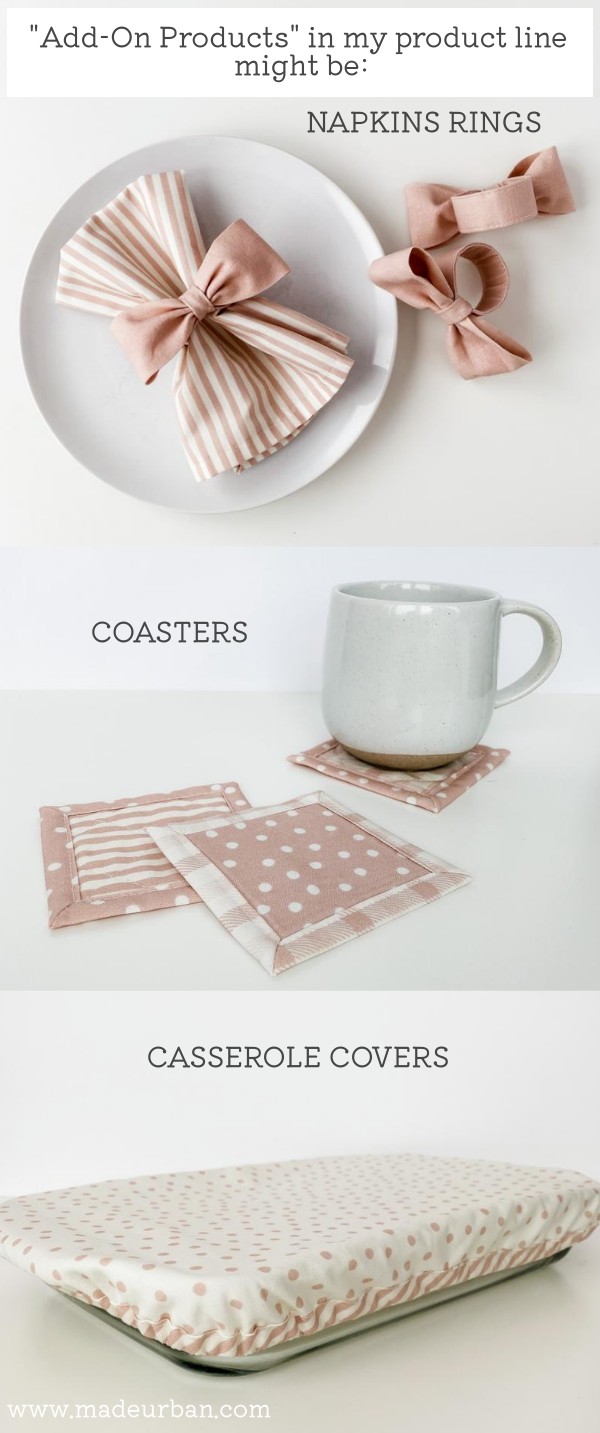
Other examples:
Jewelry maker:
- Core item: pendant necklace
- Add-on items:
- Individual pendants/charms to add to or change the look of the pendant necklace
- Matching ring
- Travel/storage bag for the necklace
Candle maker:
- Core item: container candles
- Add-on items:
- Diffuser oils
- Reed diffusers
- Wick trimmer or snuffer
Bath & body
- Core item: Moisturizing cleanser, toner, and lotion
- Add-on items:
- Moisturizing lip balm
- Travel-size set
- Spa headband (to wear while washing face)
You don’t necessarily need to make these items. You may be able to buy items at wholesale prices and mark them up to retail.
5 – Entry/Down-sell Products
These items work in the opposite way that upsell products do. They’re for the shopper who:
- Needs to build trust with your business/brand before spending more money
- Doesn’t have room in their budget to buy a core or upsell product
- Wants to support your business in a small way
Your entry/down-sell products should be lower-priced but may be slightly more expensive than your add-on products.
They may be similar to your add-on products; however, they should feel like a complete purchase on their own.
For example:
Bowl covers could be an add-on product and an entry/down-sell product in my table linen line because they can stand on their own; everyone has food to cover while in the fridge, and these replace Saran Wrap and tinfoil. On the other hand, my napkin rings wouldn’t make a great entry product because most people buy napkin rings to match the napkins they’re buying.
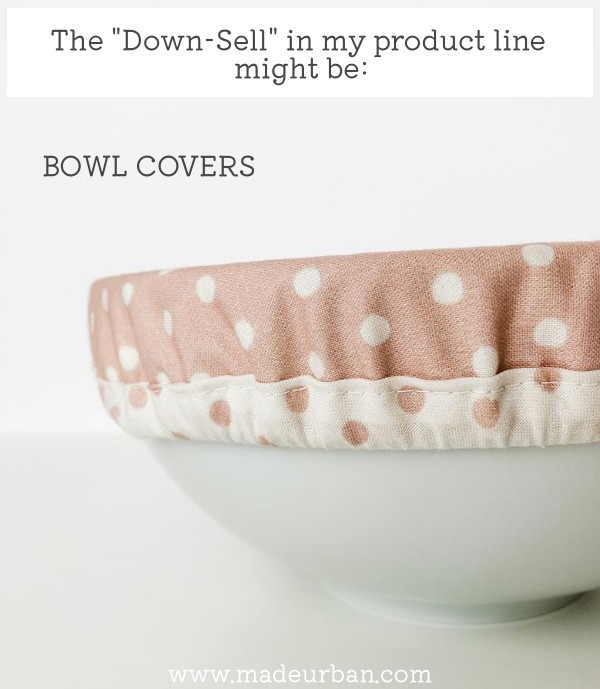
For a jewelry business, a ring can be an add-on purchase and be worn with the matching necklace, or it can be purchased and worn on its own, without feeling incomplete.
On the other hand, a charm can be purchased as an add-on and used with the necklace, but one wouldn’t buy a charm or use a charm on its own; it needs the necklace to complete it.
If your add-on products double as entry/down-sell products, you’re all set.
If you need to introduce new products to offer lower-priced items, consider creating versions of your core products that are smaller or lower quality.
For example:
- Core products: leather handbags
- Entry/down-sell products: the same style of bags offered in waxed canvas. Or smaller versions of the leather handbags.
6 – Bundled Products
Bundles are a great way to offer higher-priced purchasing, help shoppers envision how your products work together, and encourage multi-item purchasing.
Ideally, you’ll offer a small perk to people buying bundles.
The items may be slightly discounted (e.g. when someone buys the handbag, wallet, and cosmetic bag, they receive 10% off).
Or, the items may be packaged together in a gift box, which provides added value (especially during gift-giving occasions).
For example, a candle, bath bomb, and loofah bundled together in a gift box and wrapped with a Christmas-themed ribbon, so it’s a ready-to-give gift.
Again, it’s important that the items within a bundle work together. Think about bundles as creating themed gift baskets.
For example, I might bundle:
- Different sizes and shapes of hot pads
- Placemats, napkins, and napkin rings in sets of 4, 6, and 8
- 3 sizes of bowl covers to create a set
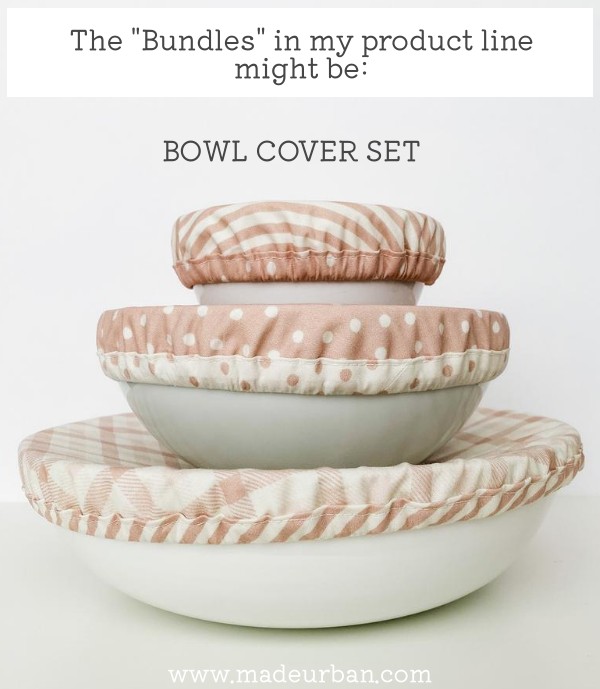
Together, these types of products help build a well-rounded product line that encourages multi-item sales and repeat customers.
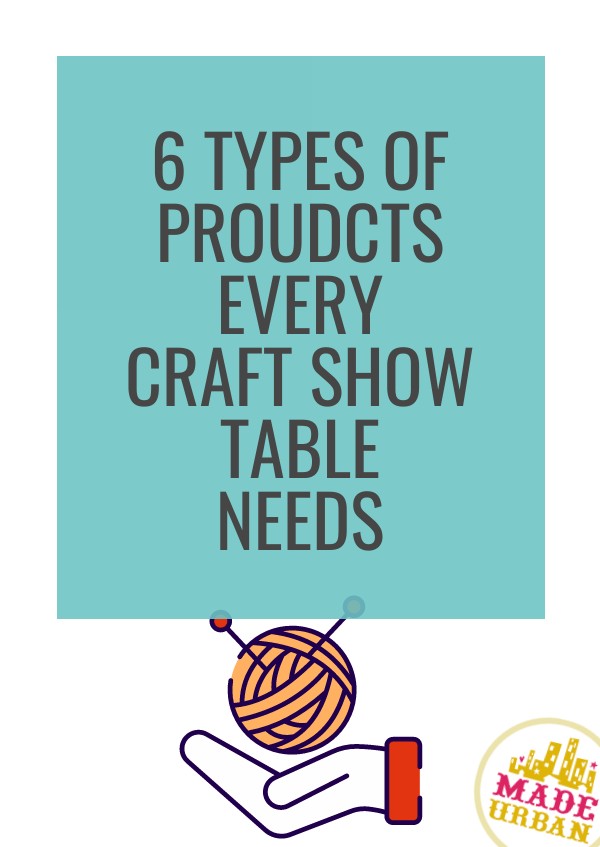

Hey, I’m Erin 🙂 I write about small business and craft show techniques I’ve learned from being a small business owner for almost 2 decades, selling at dozens of craft shows, and earning a diploma in Visual Communication Design. I hope you find my advice helpful!
